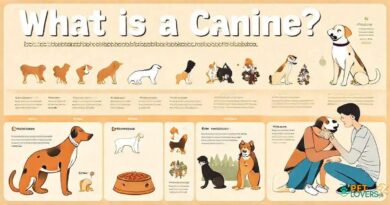What is caution signs
What is Caution Signs?
Caution signs are essential visual indicators that communicate important safety information. They are designed to alert individuals to potential hazards or risks in a given environment. Understanding what caution signs are and their significance can help prevent accidents and ensure a safer experience for both humans and animals, particularly in areas frequented by dogs.
The Importance of Caution Signs
Caution signs play a crucial role in maintaining safety standards in various settings, including parks, veterinary clinics, and dog training facilities. These signs serve as a proactive measure to inform dog owners and handlers about potential dangers, such as slippery surfaces, aggressive animals, or restricted areas. By being aware of these signs, dog owners can take necessary precautions to protect their pets and themselves.
Common Types of Caution Signs
There are several types of caution signs that dog owners should be familiar with. For instance, “Beware of Dog” signs indicate the presence of a potentially aggressive dog, while “Wet Floor” signs warn of slippery surfaces that could pose a risk to both dogs and their owners. Other common signs include “No Dogs Allowed,” which indicates areas where dogs are prohibited, and “Leash Required,” reminding owners to keep their dogs leashed for safety.
Understanding Caution Sign Symbols
Caution signs often feature symbols that convey specific messages quickly and effectively. For example, a dog silhouette with a warning triangle signifies a potentially aggressive dog, while a paw print with a slash indicates that dogs are not allowed in that area. Familiarizing yourself with these symbols can enhance your ability to interpret caution signs accurately and respond appropriately.
Legal Implications of Caution Signs
In many jurisdictions, caution signs have legal implications. Property owners may be required to display caution signs to inform visitors of potential hazards, thereby reducing liability in case of accidents. For dog owners, understanding these legal aspects can help them navigate public spaces responsibly and ensure compliance with local regulations regarding pet safety.
How to Respond to Caution Signs
When encountering caution signs, it is essential to respond appropriately to ensure safety. For example, if you see a “Beware of Dog” sign, it is wise to keep your distance and avoid approaching the property. If you come across a “Leash Required” sign, make sure your dog is securely leashed to comply with the rules and prevent any incidents.
Educating Others About Caution Signs
As a responsible dog owner, educating others about the importance of caution signs can contribute to a safer community. Share information with fellow dog owners, friends, and family about the significance of these signs and encourage them to respect the warnings they convey. This collective awareness can help create a safer environment for everyone, including our furry companions.
Where to Find Caution Signs
Caution signs can be found in various locations, including public parks, dog training facilities, and veterinary clinics. Many local governments also provide caution signs in areas where dogs are frequently walked. Additionally, pet supply stores often sell caution signs that dog owners can place on their properties to alert visitors about their pets.
Creating Your Own Caution Signs
If you have specific safety concerns regarding your dog or property, consider creating your own caution signs. Custom signs can be tailored to your needs, such as indicating a dog in training or warning about a specific hazard in your yard. Ensure that your signs are clear, visible, and easy to understand to effectively communicate the intended message.
Conclusion: The Role of Caution Signs in Dog Safety
In summary, caution signs are vital tools for promoting safety in environments where dogs are present. By understanding what caution signs are, their importance, and how to respond to them, dog owners can help create a safer experience for themselves and their pets. Awareness and education about caution signs can significantly reduce the risk of accidents and enhance the overall safety of dog-friendly spaces.



